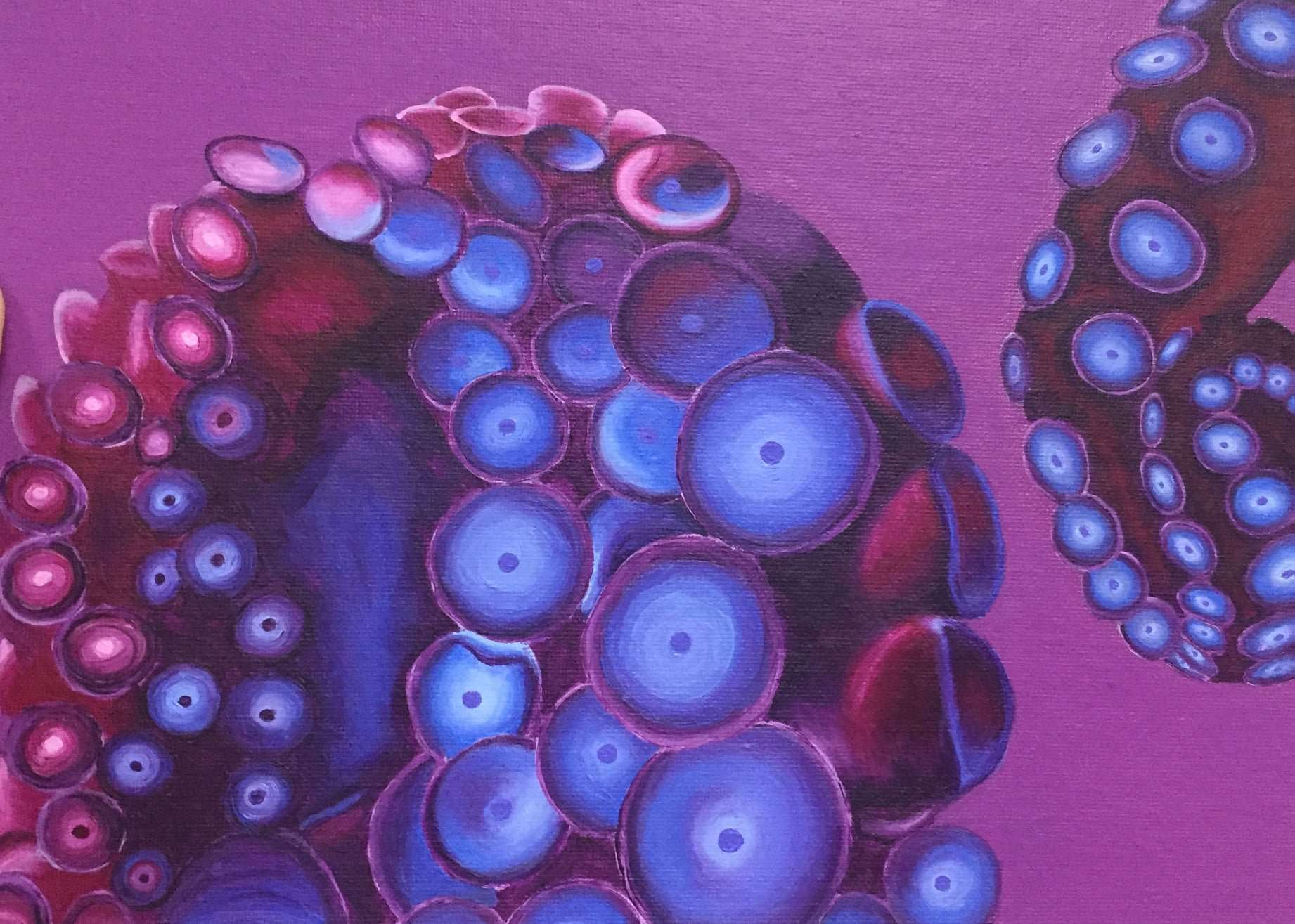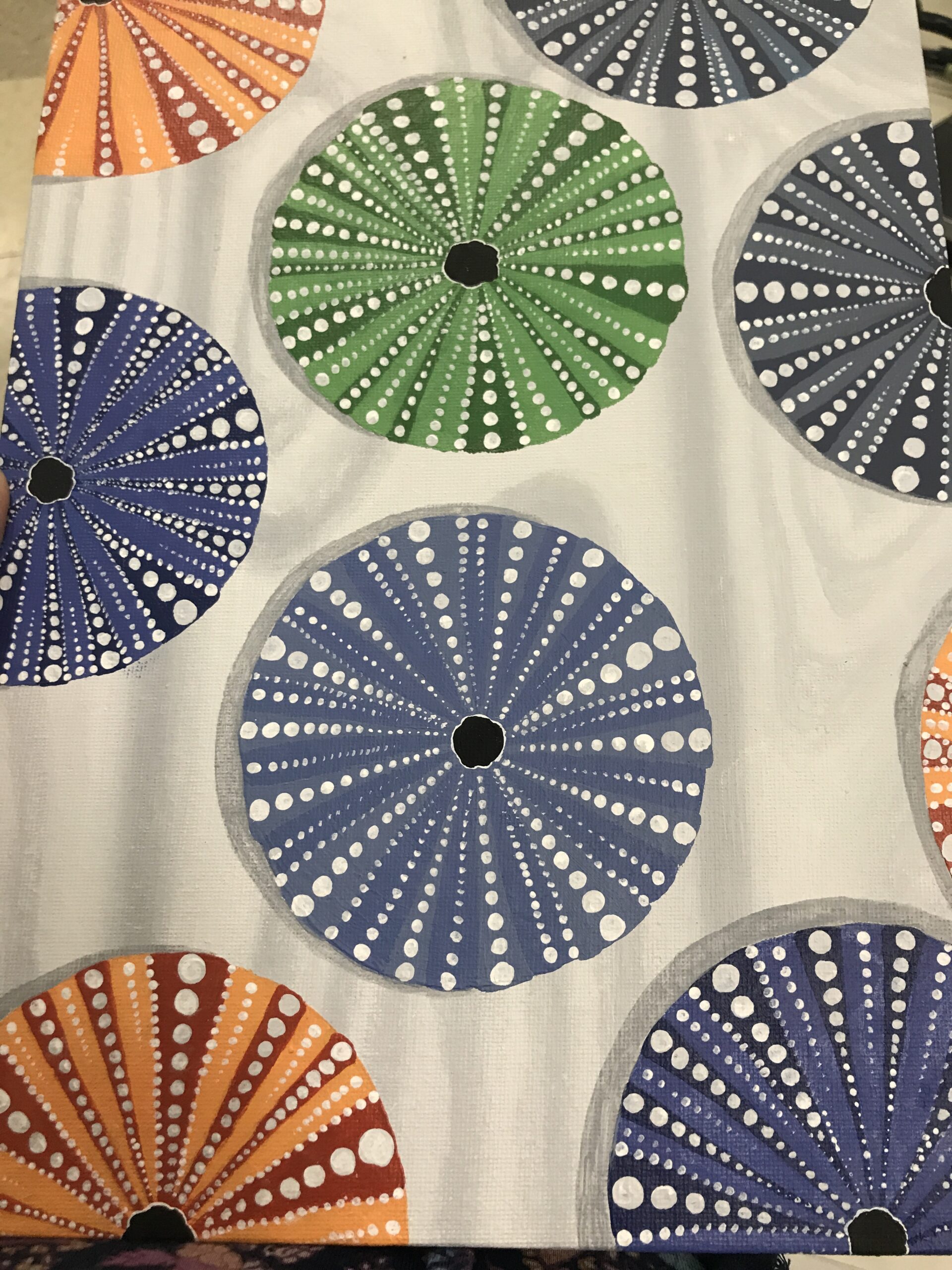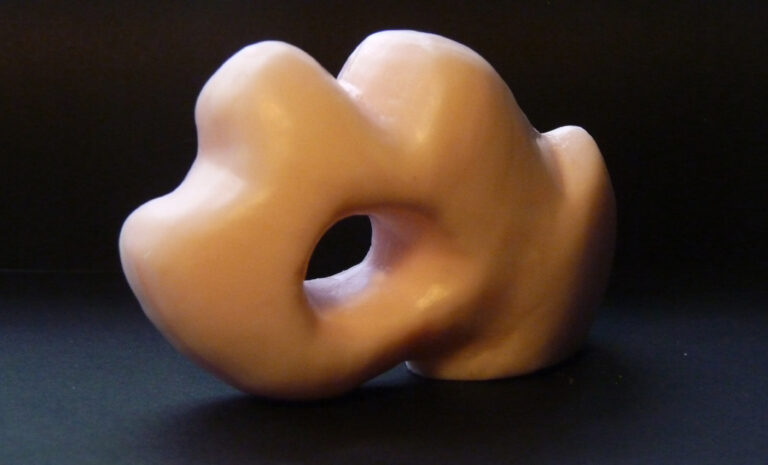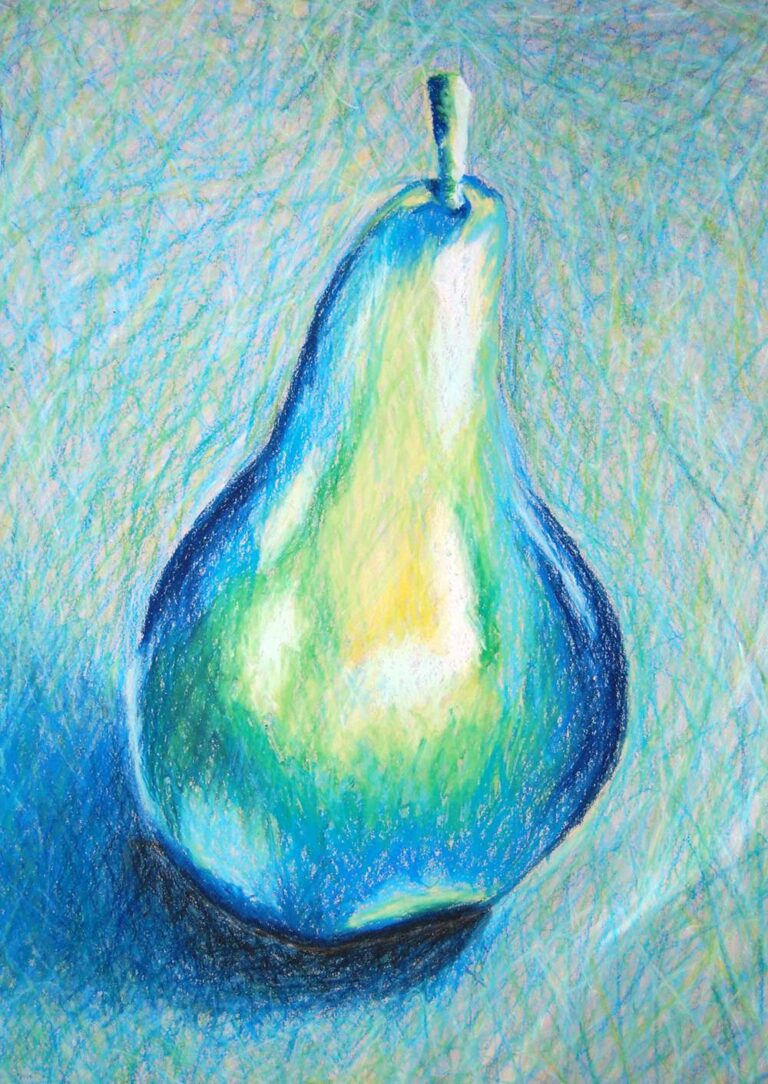Grade Level
9-10, 11-12Duration
4-5 70 minute class periods
Materials
9×12 canvas board (or railroad board), heavy body acrylics, variety of brushes, palettes
Media
Painting, Acrylic
Lesson Objectives
For the student to…
• listen, observe, and research concepts and content to develop an idea for the project.
• express information, feelings, and/or ideas visually within the artwork.
• express processes and ideas through writing to create an informative statement about work.
• develop a combination of at least 6 different colors that create a visually appealing, harmonized scheme.
• name the different color relationships and schemes such as complementary, analogous, and triadic through listening, writing, and reading.
Introductory Activity
Discuss the terms biomorphic and polychromatic.
Biomorphic
Derived from the Greek words bios (life) and morphe (form), a term referring to abstract forms or images that evoke associations with living forms such as plants and the human body.
Polychromatic
Using more than one color! This painting should be colorful- the color scheme you use is up to you!
• Have students research biomorphic paintings. They should search for elements that interest them such as neurons, plant life, or really any living organism. Avoid portraits, please.
• Start rough draft. by sketching out ideas. The final product should be somewhat abstract and somewhat zoomed in/macro.
Lesson Process
• Lightly sketch your final design onto canvas or rail board.
• Plan out your colors first, so that they are balanced and harmonized. Make your own colors! Tones, tints, shades, tertiary colors, etc.
• Start painting. Use EXCELLENT CRAFTSMANSHIP. Smooth edges! No white of the paper/canvas showing, avoid streaky brush strokes, do a few layers if needed, etc. Make sure you start with the biggest areas first. For instance, if I had a big background, I would paint that before doing an intricate, detailed foreground that I would eventually have to paint around. Start with light colors then use dark. It is much easier to paint dark over light than light over dark. Use common sense. If you are having a dark blue background and the content you plan to paint over will be yellow, leave the space white where the lighter color will be going.
• Sign the right-hand corner
Vocabulary
biomorphic, PolychromaticResources
Science in Art – Google Slides
Artist Paints Biomorphic Universes Bursting with Colorful Flora and Fauna
Author & Website/Blog
Whitney Robarge
Supporting Images








